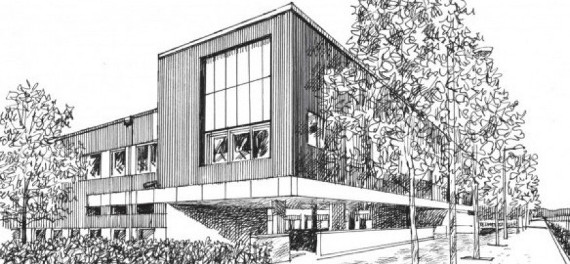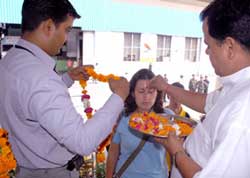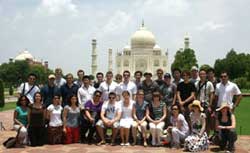Industrial Jewels in India's Crown

|
Welcome to Bhusan Steel
The Tata Nano
The Taj Mahal
|
Students from the Institute for Manufacturing have just returned from a fact-finding tour of India.
Mukesh Kumar, a research student in international manufacturing, was one of 37 students to take part. The trip took in more than 20 of India's leading manufacturing companies, industrial associations and support agencies in just 12 days.
The study tour was designed to provide greater understanding of the investment opportunities for UK companies in India and to identify future trends, as Mukesh explains.
We were interested in learning how Research and Development, Procurement, Production, Distribution and sales were being conducted in India.
We looked at R&D on our visit to the Auto Cluster in Pune, a research institution dedicated to the automotive industry and funded by a public-private partnership.
Already the facility is being used by global auto firms like Mercedes as well as domestic producers like Baja Auto and Tata Motors, to develop and test new products and manufacturing processes. It enables the world’s leading manufacturers to save costs and boasts world class facilities.
We also saw how seriously Indian companies were taking R&D when we visited vehicle manufacturers. Companies like Maruti Suzuki and Bajaj are investing in design capability, and while Bajaj already has the expertise to design and develop motorcycles, Maruti Suzuki say they’ll be developing vehicles in India without Japanese help within two years.
It was fascinating to see how this side of industry was growing and how Indian firms are now actively seeking to buy other companies or purchase skills from overseas to develop their skills base, be it in production capability or R&D.
We also saw the rapid changes being made to India’s production processes. The companies we visited are all demanding the best production technologies and haven’t stinted in investing in production capability all over the world.
An exemplar of this was Bajaj Auto. Its world class facility has automated painting applications, robotic machine lines, voice command systems and an automated guided vehicle to move materials across the plant. It was a good chance to get a close look at what’s reputed to be the best factory in India!
It was also encouraging to see that this type of investment was paying dividends for the Indian economy. It seems that apart from some export oriented businesses, the economy has been isolated against the global economic downturn. Maruti Suzuki for example was still predicting a 5% increase in sales growth.
Finally we were impressed with the ethos of value-based engineering and the part it is playing in making products affordable to the rural poor. The development of the compact car the Tata Nano was a good illustration. It has featured heavily in the popular press in the UK, and the methods of reducing price through removal of non-essential features and parts without compromising the structural integrity of the vehicle is a great example of industrial innovation. The study tour was a fantastic opportunity to get a close glimpse of Indian industry and we will be writing up the findings of the trip in a major research project called 'Hot Stuff - India's recipe for Industrial Success'.
The findings will be presented at the IfM later this year.












